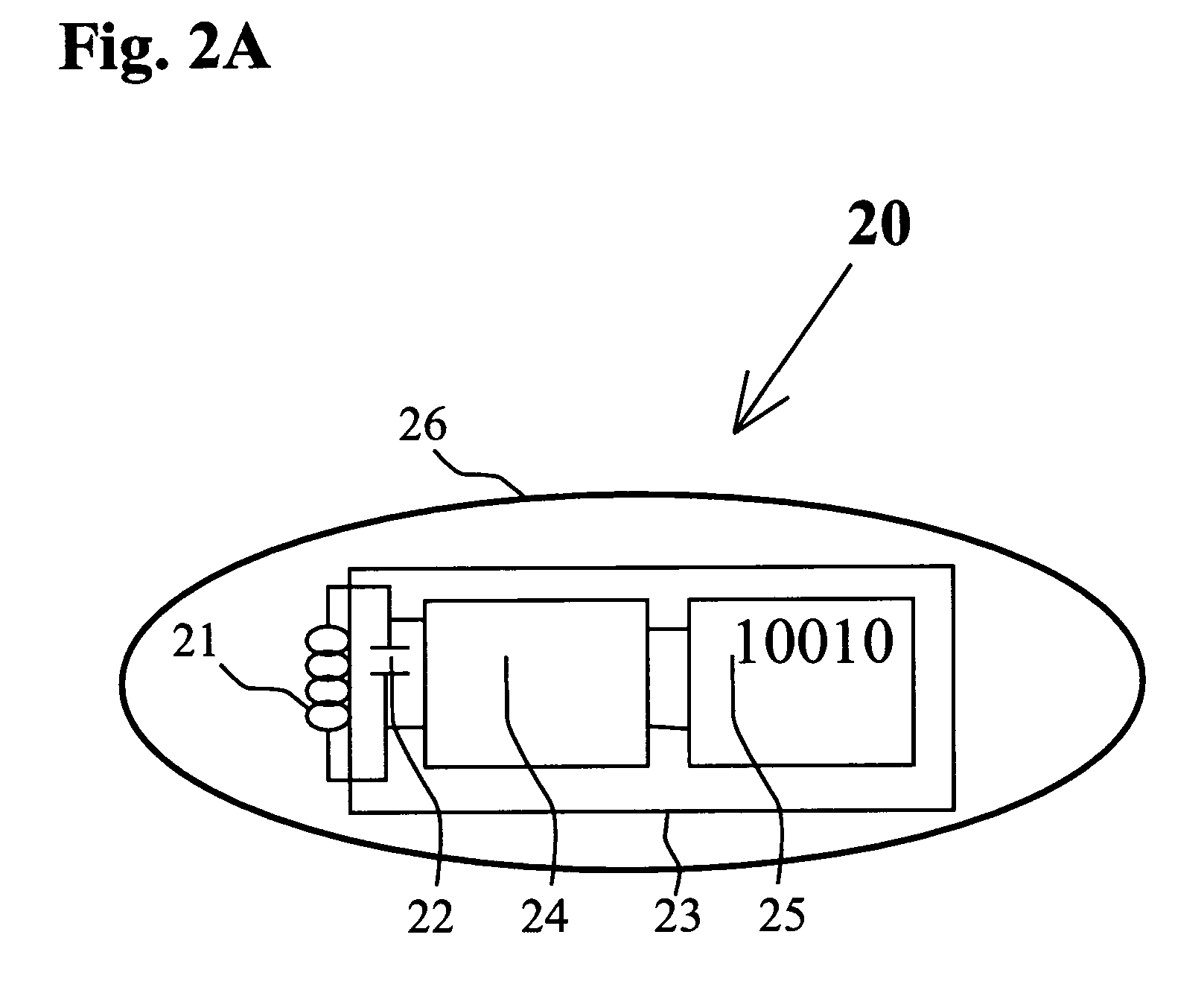Multi-modal detection of surgical sponges and implements
- Summary
- Abstract
- Description
- Claims
- Application Information
AI Technical Summary
Benefits of technology
Problems solved by technology
Method used
Image
Examples
example 1
[0055] A metal detector system ‘Auto Scan Security Detector’ manufactured by White Electronics Inc. is used to detect metallic objects in a surgical incision in a cadaver. The Auto Scan detector is positioned at a distance from 0.5 inches to 7.5 inches from the cadaver body surface and antenna was scanned back and forth. This movement is essential to detect the metallic objects, since the movement results in a change in the magnetic coupling between the antenna and a metallic object resulting in a audible signal. If the metallic object is oriented perpendicular to the surgical cavity, sensitivity of detection is reduced. Since the surgical cavity is generally flat and has a limited depth, the surgical instruments tend to lie flat in the cavity and are very easily detected.
[0056] The second system detects markers or tags incorporated within non-metallic objects such as sponges or laparotomy pad and gauze pads in a surgical wound. A marker is integrally incorporated in a glass or pol...
PUM
 Login to View More
Login to View More Abstract
Description
Claims
Application Information
 Login to View More
Login to View More - R&D
- Intellectual Property
- Life Sciences
- Materials
- Tech Scout
- Unparalleled Data Quality
- Higher Quality Content
- 60% Fewer Hallucinations
Browse by: Latest US Patents, China's latest patents, Technical Efficacy Thesaurus, Application Domain, Technology Topic, Popular Technical Reports.
© 2025 PatSnap. All rights reserved.Legal|Privacy policy|Modern Slavery Act Transparency Statement|Sitemap|About US| Contact US: help@patsnap.com



